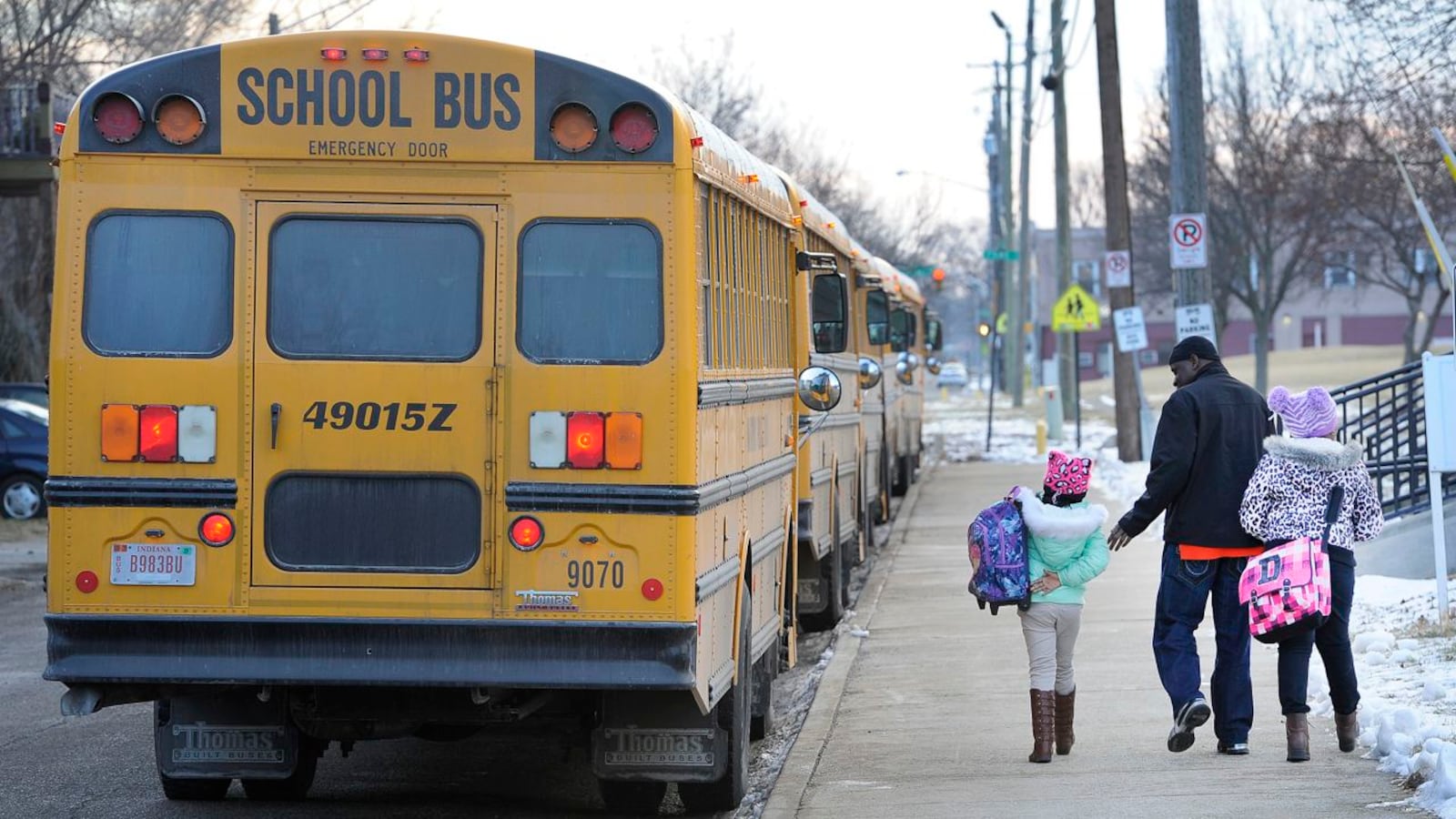When her district faced an $18 million loss in tax dollars in 2011-12, Franklin Township Superintendent Flora Reichanadter had to make a difficult decision: Eliminate funding for the district’s busing or cut teachers and classroom resources?
She went with the former, which prompted a lawsuit and three-year debate about whether Indiana students have a constitutional right to ride a bus to school.
Today the Indiana Supreme Court gave its answer: The state constitution does not require school districts to offer busing. That could clear the way for other cash-strapped schools to tell kids to find their own rides to school.
Franklin Township actually reinstated busing in 2012, but Reichanadter said the court’s ruling justified the hard decision she said she made to keep teachers while parking the district’s buses.
“It’s really just an affirmation that what we did at the time was the best we could do with the finances we had at the time,” Reichanadter said.
Jeff Butts, superintendent in Wayne Township and treasurer for the Indiana Association of Public School Superintendents, said the Supreme Court’s ruling, which overturned a lower court decision, gives other districts across the state a lot to think about when money gets tight.
“It’s a big win for the school district,” Butts said. “We are happy for them. We know that it created controversy in their community and it created some strife, but I’m happy for Franklin Township, and I think this is something that every school district is now going to have to take a look at.”
In the midst of the 2011 budget squeeze, Reichanadter said Franklin’s school board was adamant that it would not cut teaching jobs or academic programs.
“Rather than take the money out of the general fund, which is paid for at the state level, we chose at that time to eliminate transportation,” Reichanadter said. “If we wouldn’t have eliminated transportation, we would have had to eliminate staff, and at the time our board did not want to impact the classroom.”
The district shortfall had two causes, she said: caps on property taxes passed by the legislature in 2010, which cost the district about $18 million per year, and a failed referendum. Voters did not approve a request to increase their property taxes to give the district more money.
The tax caps were put into place as an effort to make property taxes, which sometimes shifted up or down unexpectedly for homeowners when their home values changed, more stable. Most school district spending today comes from state sales and income tax and is doled out by the legislature. Schools can use property taxes to pay down debt for school buildings, support building maintenance and fund busing.
Tax caps effectively stabilized tax bills for homeowners and businesses, but put some school districts that were paying down debt in a tough spot.
Reichanadter said Franklin Township was hit especially hard by the tax caps, as 94 percent of the township’s property taxes come from homeowners, who are taxed at a lower rate than businesses and farmers. School districts with more businesses and fewer residences generally raise more property tax money.
As budgets became tight, hard decisions had to be made, she said.
“It became really, for us, about survival,” Reichanadter said. “It was necessary. We literally did not have the funds.”
But some parents were furious. Schools became mired in traffic jams of parents dropping kids off. When the district cut a deal for an outside bus company to offer rides to school that parents had to pay for, a group of them filed a lawsuit.
The suit demanded reimbursement for families who were driving their own children to school and refunds of the busing fee the company charged for families that used that service. The Supreme Court’s ruling said that parents could not get a refund because schools are not constitutionally required to provide busing. It also said schools can’t charge a a separate fee for bus service.
By 2012 the district was able to refinance some of its debt, lowering its interest payments. That freed up money it used to restore bus service after just one year without it. Although the district is busing kids now, it might not always be able to do so, Reichanadter said, because of changes to how the state is funding schools and because the tax caps don’t seem to be going anywhere.
Under the budget proposed by the Indiana House, Franklin Township gets just $16 more per student, or about $137,000 per year, she said.
“This decision just barely scratches at the surface of funding public education because we still continue to struggle with the tax caps,” Reichanadter said. “That’s not going to help my transportation fund that runs on $4 million to $5 million.”
Butts said Wayne Township is facing a funding shortfall, too. If it can’t close its $8 million gap with a referendum to voters this spring, reducing bus service could be on the table. Wayne currently offers free busing to all its students, as many schools aren’t in neighborhoods with sidewalks or safe walking zones. But that $8.8 million transportation budget, or part of it, could also be useful elsewhere, Butts said.
“If you don’t have safe walking routes to and from school, then you also create a safety issue for your children,” Butts said. “But the reality is you have to find a way to fund all the different pieces, and when you have a reduced revenue stream, you also have to find a way to make sure you are providing all the services that are essential to the classroom.”

